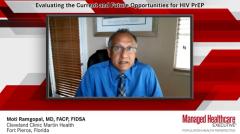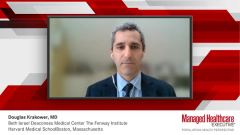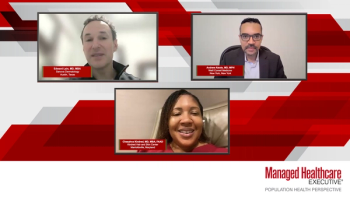
Creating a Successful HIV PrEP Program
Clinician Moti Ramgopal, MD, FACP, FIDSA, highlights key components of a successful HIV PrEP program and comments on the role of providers in introducing these components throughout a patient’s continuum of care to maximize outcomes.
Episodes in this series

Moti Ramgopal, MD, FACP, FIDSA: As outlined by the CDC, the key components of a successful PrEP [pre-exposure prophylaxis] program are really 3 areas. One, awareness; the second one is uptake, and the third is adherence and retention. What is awareness? Awareness is about promotion, engagement, and education. Uptake is where you have the initial clinical evaluation of the patient, assess the indications of it. You have counseling and then you prescribe PrEP. Then adherence and retention, which is the third component, is very detailed. You have to get a patient back into care, monitor them closely, and keep them in care.
There are 2 areas that are the more challenging areas. The awareness component, whereby getting people engaged and educated, and this is between the patients and the health care workers. When you look at clients out there or potential patients who need to be on PrEP, a lot of them are not aware of the importance of PrEP or the reason they need it. They’re not even aware there’s something called PrEP. Then there are those providing care, and there are different generations of providers. When we look at providers in my generation versus the younger generation, there’s a little difference in opinion, there’s a little difference in attitude toward PrEP. That’s a really important area to address.
The second area that I think that needs to be worked on as well is retention and care, meaning that patients are involved, they’re engaged, they want to be on PrEP. They start on PrEP, and then 3 to 6 months later, they realize, oh, either they’re not seeing the value of PrEP or they’re not feeling that they’re at risk anymore. Or there is less risk or they have lost their insurance, and then they fall out of care and they fall out of PrEP care. And then those participants will have a higher risk of acquiring HIV at that time.
Those are the 2 areas I really think we need to focus on a lot more because once the patients are in care, they’re seen by the provider, it’s easy to address; put them in treatment, start PrEP the same day, a rapid initiation, follow the laboratory tests. But retention of PrEP and getting people into PrEP are the 2 big challenges we are facing.
Transcript edited for clarity.
Newsletter
Get the latest industry news, event updates, and more from Managed healthcare Executive.

























































